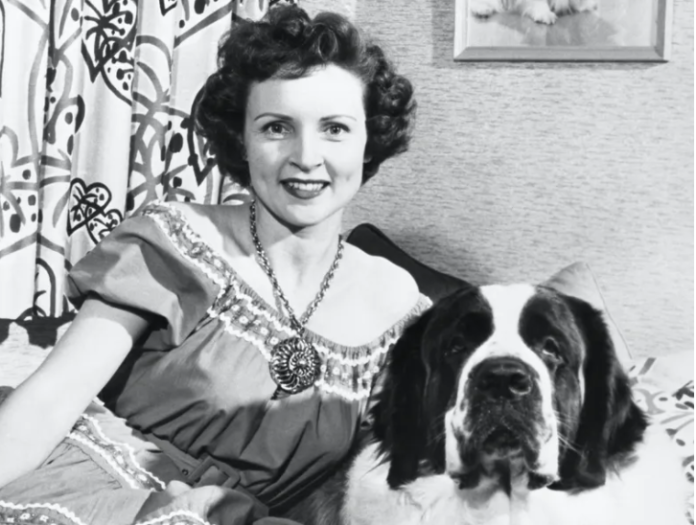
Melissa L. Caldwell, University of California, Santa Cruz
Betty White’s death on Dec. 31, 2021, inspired countless remembrances and celebrations of her life and her brilliant comedic work on television.
The actress also had a lifelong love of animals, especially dogs. She treasured animals as companions and supported efforts to improve their welfare as an actress, advocate and donor. Inspired by this legacy, White’s fans are encouraging people across the country to honor her by making their own charitable contributions of at least US$5 to an animal rescue of their choice on Jan. 17, 2022 – the day that would have been White’s 100th birthday.
Known as the #BettyWhiteChallenge, this campaign has spread rapidly on social media.
Compassion economies
This outpouring of public support offers a good opportunity to take a closer look at how Americans, especially people like me, care for animals.
I currently have three rescued pets: a 13-year-old coonhound, a bloodhound and a feisty cat that keeps everyone in line. My family has also fostered more than 25 coonhounds and bloodhounds.
I’m also an ethnographer of caregiving, compassion and charity, as well as a longtime volunteer with several animal rescues – nonprofits that are largely volunteer-run and care for animals in need of new homes. I study how people come together to save animals and find them their “forever homes.”
The growth of rescue organizations is one big reason why the estimated number of adoptable animals that are euthanized every year appears to be declining. Precise figures are unavailable, but somewhere between 1 million and 2 million dogs and cats are killed every year. According to the statistics that are available, that is down from approximately 2.6 million a decade ago.
Efforts to improve animal welfare are underway everywhere in the United States. One of my favorite examples occurred during the 2020 presidential election, when a rescued blind Bluetick Coonhound named Oscar became a local celebrity and rallying point for a politically fractured Alabama town.
The full scale and impact of this work is hard to see. More than 10,000 shelters, rescue organizations and sanctuaries collectively spend more than $4 billion annually to provide food, shelter, medical care, behavioral training and other care for the more than 6 million companion animals that enter U.S. shelters every year.
In addition to cats and dogs, animal shelters and rescue organizations may temporarily care for many other kinds of animals, including horses, goats, donkeys, reptiles, amphibians, birds, rabbits, guinea pigs and other rodents. Some organizations specialize in housing, feeding and obtaining medical care for other kinds of animals that have been abandoned and abused, such as cows, camels and elephants.
America’s rescue communities rely on what I and other experts call compassion economies.
In addition to grants from federal, state and local government sources, charitable donations flow from businesses, foundations and individuals. These gifts can be monetary or in-kind donations of medical services, food, shelter, toys and transportation. Americans also contribute through what may amount to millions of hours of volunteering. https://www.youtube.com/embed/be9ZFN5pt2s?wmode=transparent&start=0 In a 1993 appearance on the ‘Phil Donahue Show,’ Betty White urged Americans to do more to rescue animals.
The role of volunteers
Volunteers are often heralded as the backbone of any animal rescue operation. They play essential roles in terms of guaranteeing that animals get the exercise, socialization and nurturing they require while awaiting adoption.
There’s ample room for creativity. Rescue Readers is a program in which children and adults read to animals in the shelter, providing company for the animals and strengthening reading skills for the readers. Kitty Cuddlers help by socializing kittens until they are old enough and strong enough to be adopted.
And some people temporarily care for adoptable animals they do not plan to keep long term in their homes – a practice called fostering. Fostering animals not only frees up space and staffing at animal shelters, it helps animals recover from stress. Fosters can also teach animals to be good companions for their new families.
Volunteers can help in other ways, too.
Amateur and professional photographers can take attractive photographs of waiting animals and thereby increase their chances of being adopted. Pilots and drivers can pitch in, through groups like HoundPilot and Pilots N Paws, by transporting rescue animals to communities where they are more likely to be adopted.
And flight angels are airplane travelers who take along pets in transit as accompanied baggage. Once they land at their destination, a rescue organization picks up the transported companion animals.
The reasons why someone supports animal rescue efforts are often deeply personal. They might volunteer and make donations to honor their own beloved pets, because they are unable to have a pet of their own or because they are lonely and miss the companionship of having a pet.
Volunteering in animal rescue can make people feel like they are part of a community and that they are making real differences in the lives of animals and other people.
That has been especially apparent during the COVID-19 pandemic, when many people have felt disconnected from friends and family. People who foster animals describe the thrill of watching scared, sick animals blossom into healthy, happy pets that are ready for their “forever families.”
A unifying force
Americans’ love for animals can sometimes transcend political differences. Some 36% of Republicans and Democrats alike are dog owners, for example.
Many people with companion animals in their homes do disagree about issues such as spaying and neutering policies, euthanasia or pet food.
But a shared love for animals allows animal lovers with conflicting viewpoints to work toward the common good in ways that may even mediate differences of opinion about race, gender and other issues. https://www.youtube.com/embed/9r9ga9fQQ14?wmode=transparent&start=0 Betty White regularly harnessed her camera-ready appeal to support animal charities.
[Get the best of The Conversation, every weekend. Sign up for our weekly newsletter.]
Melissa L. Caldwell, Professor of Anthropology, University of California, Santa Cruz
This article is republished from The Conversation under a Creative Commons license. Read the original article.



















